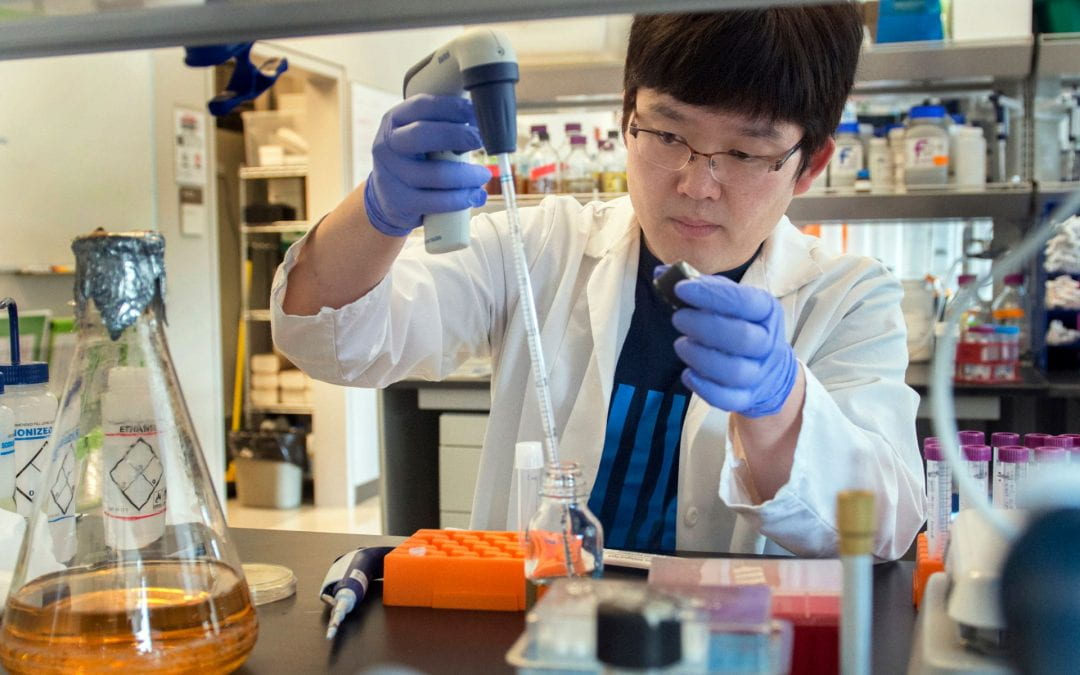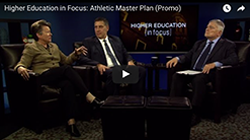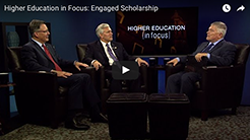Debates about higher education in the public sphere often lose sight of a key part of the narrative — our top research institutions have always risen to the challenge of meeting society’s greatest needs. Today is no different. In fact, while devastating, the novel coronavirus has reinforced the critical role these institutions play in addressing global crises and serving the greater good.
At Penn State, where I oversee the research enterprise, we are steadfast in our commitment to making the world a better place. Thanks to the hard-working faculty, students and staff across our commonwealth, we recorded a record high $1.01 billion in research expenditures this past fiscal year. This led to scientific advancements that address food security and sustainable energy solutions, contribute to economic development, and enhance personalized and population health. And that’s in addition to using our existing infrastructure — cutting-edge biosafety research facilities and mechanisms for cross-disciplinary research — to strategically transition several research programs amid the current pandemic.
When you see the funding numbers top $1 billion, however, it’s important to understand the vast amount of research and scholarship happening, where the funding is coming from, and how we are thoughtfully using those dollars to improve the lives of those in our communities.
The largest single increase came from the Department of Defense, with a grant of $30 million over the next five years to counter threats of destruction, with a specific focus on improving current and developing future warfighter technology. Penn State is leading the Interaction of Ionizing Radiation with Matter University Research Alliance.
Another example, Patricia “Sue” Grigson, professor and chair of the Department of Neural and Behavioral Sciences, received nearly $5 million from the National Institutes of Health (NIH) to study whether an already-approved drug for treating obesity can be used to reduce cravings and prevent relapse in those struggling with opioid addiction. This effort is part of the NIH’s “Helping to End Addiction” initiative, which aims to improve treatments for chronic pain, curb the rates of opioid use/overdose and achieve long-term recovery from opioid addiction.
Mohamed Trebak, professor of cellular and molecular physiology in Penn State’s Cancer Institute, received an anticipated $6.3 million from the National Heart, Lung, and Blood Institute to investigate L-type calcium channel blockers (LCCBs) — the most widely used drugs for treating hypertension — which his team found may harm the heart as much as help it.
And just to touch on one other that may impact many people’s lives for the better is a study sponsored by one of our industrial partners where two of our faculty experts in acoustics — Stephen Thompson and Michelle Vigeant — will evaluate and investigate the use of active noise control to mitigate the effects of excess noise in the workplace.
As you can see, our funding comes from a variety of external partners in addition to internally funded seed-grant projects, all of which enable a broad range of scholarship that consistently ranks us as one of our country’s top multidisciplinary research institutions. By building our scope of expertise and competing for additional research dollars, we can continue to attract top talent, build better facilities with cutting-edge equipment, and continue to benefit society as a whole.
However, we did not get here overnight or by accident.
Our research enterprise as it exists today has benefited from over 30 years of focused effort, countless brilliant minds, and unparalleled leadership that paved the way. Former Senior Vice President for Research Eva Pell, who served from 1999-2009, is largely credited with laying the building blocks that incentivized faculty, deans and administration to start working in a less siloed fashion — an interdisciplinary structure that uniquely positions Penn State to tackle big problems and is now the envy of our peers.
Home to seven major interdisciplinary research institutes and one defense-related research unit, this structure — for example — was championed by former vice president for research Neil Sharkey and enabled the creation of the Child Maltreatment Solutions Network. The network, led by Jennie G. Noll, professor of human development and family studies, now includes faculty from seven departments across five academic colleges. In 2016, Network faculty received funding to launch a first of its kind, five-year study aimed at illuminating the bio-psych-social mechanisms that underlie the long-term negative health consequences of child maltreatment.
And in the current pandemic, with one of the largest clusters of skilled infectious disease, data and policy scientists, I can tell you we turned much of our research enterprise in a matter of weeks or even days to study all aspects of this virus. We were measured in our approach to safely continue the most critical work, and I can tell you that the spirit of collaboration is stronger than ever. Take the Manufacturing and Sterilization for COVID-19 (MASC) Initiative for example. It was launched at Penn State in March by Tim Simpson in the College of Engineering. Now more than 350 researchers and counting are contributing their expertise to design and deliver rapidly scalable solutions to help protect our health care workers who are on the frontlines. I am humbled and grateful for their exceptional accomplishments, dedication and perseverance during this pandemic. Their unyielding commitment to continually developing research advances is unmatched.
Direct biomedical intervention is only a small part of how research institutions will lead societies through this critical time. This pandemic is impacting our society in ways that many of us are only starting to realize. The extent of the economic and psychological impacts of this crisis are yet to be seen, but our top scientists are already anticipating and working to meet our future needs.
There are quite a few unknowns, but this is what I know to be true: Research institutions will continue to do this critical research work for the immediate needs of our society today. And we will continue to teach the leaders of tomorrow, setting them up for success, as they prepare our society for the future. I am excited to see where our advances and innovations will take us.
Lora Weiss is senior vice president for research at Penn State.






Dr. Weiss, without taking anything away from the many contributions to science and administration at Penn State by Dr. Eva Pell, I wish to point out that the real kudos for initiating efforts to break into the departmental/college silos and to encourage and establish interdisciplinary research at PSU go to President Dr. Eric Walker and Vice Presdent Dr. Elburt F. Osborn.
These gentlemen realized during the 1950s-1960s that dramatic steps were needed to encourage and stimulate interdisciplinary interaction in the research enterprise at Penn State. They established the Breazele Reactor Facility as an interdisciplinary research asset. They took ORL/ARL under Director John Johnson along with the newly established Material Research Laboratory(MRL) under Director Rustum Roy and placed them in a new Institute for Science and Engineering(ISE -later IRP) and placed them within the Office of the Vice President For Research. Many additional interdisciplinary units were established and placed within ISE/IRP. Drs. Walker & Osborn have not received proper recognitian for their insight.